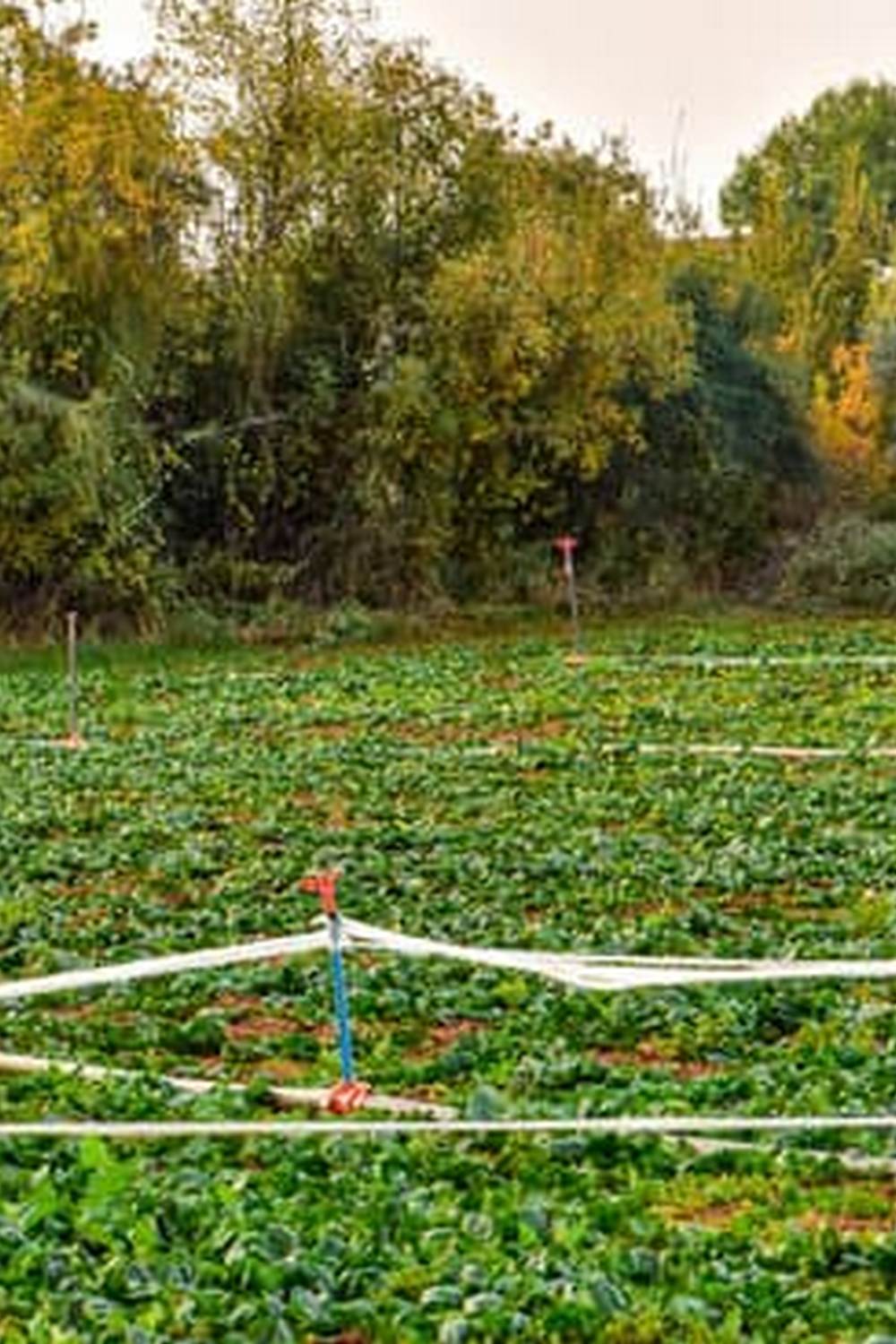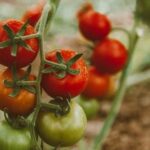Are you interested in trying your hand at vegetable container gardening in New England? Whether you’ve always wanted to grow your own vegetables but lack adequate garden space, or simply prefer the convenience and control of container gardening, this article will guide you through the process of successfully growing vegetables in containers in the region. From choosing the right containers to selecting the best vegetables for container gardening in New England, we’ve got you covered.
New England’s climate and weather patterns present both unique challenges and opportunities for vegetable container gardening. In this article, we will explore the key factors that contribute to successful container gardening in New England, including choosing the right containers, selecting suitable vegetables for the region, finding the perfect location for your containers, and implementing soil and fertilizer tips specific to New England’s conditions.
By following our expert advice, you’ll be on your way to enjoying a fruitful harvest from your very own vegetable container garden.
In addition to practical tips and recommendations for successful vegetable container gardening in New England, we’ll also provide guidance on how to maintain your containers, deal with pests and diseases common to the region, and ultimately harvest and enjoy the fruits of your labor.
Whether you’re a beginner looking to start small or an experienced gardener seeking new techniques for growing vegetables in limited space, this comprehensive guide will help you make the most of vegetable container gardening in New England.
Choosing the Right Containers for Your Vegetable Garden
When it comes to vegetable container gardening in New England, choosing the right containers for your garden is crucial. The harsh winter weather and fluctuating temperatures can be challenging for plants, so selecting the appropriate containers is essential for successful gardening.
Material
First and foremost, consider the material of the containers. Opt for durable materials such as plastic, fiberglass, or cedar wood that can withstand the extreme weather conditions in New England. These materials are not only long-lasting but also provide proper insulation for the roots of your vegetables.
Size and Depth
The size and depth of the containers are also important factors to consider. Ensure that the containers are large enough to accommodate the root systems of your chosen vegetables. Most vegetables require a depth of at least 12 inches, so select containers that can provide sufficient space for healthy root growth.
Drainage
Proper drainage is crucial for vegetable container gardening in New England, especially during heavy rainfall or snowmelt. Look for containers with drainage holes at the bottom to prevent waterlogged soil, which can lead to root rot and other plant diseases.
By considering these factors when choosing the right containers for your vegetable garden, you can ensure a successful and bountiful harvest despite the challenges of gardening in New England’s climate.
Best Vegetables for Container Gardening in New England
When it comes to vegetable container gardening in New England, the choice of vegetables to grow in containers is important. The climate and growing conditions in this region can be challenging, but with the right selection of vegetables, you can still have a thriving container garden.
Leafy Greens
Leafy greens such as lettuce, spinach, kale, and arugula are great choices for container gardening in New England. These vegetables don’t require a lot of space to grow and can tolerate the cooler temperatures often experienced in this region. They also thrive in containers with well-draining soil and can be easily harvested for fresh salads throughout the growing season.
Tomatoes
Tomatoes are another excellent option for vegetable container gardening in New England. There are many varieties of tomatoes that are specifically bred for container growing, making them a perfect choice for small spaces. Just be sure to provide adequate support for your tomato plants as they grow and produce fruit.
Peppers
Peppers, both sweet and hot varieties, can also be successfully grown in containers in New England. Choose compact pepper varieties that are well-suited for container growing and place them in sunny locations to encourage maximum fruit production.
By selecting the right vegetables for your container garden, you can enjoy a bountiful harvest of fresh produce throughout the growing season despite the challenges posed by New England’s climate. With a bit of planning and care, your vegetable container garden can thrive and provide you with an abundance of homegrown goodness.
Selecting the Perfect Location for Your Vegetable Containers
When it comes to vegetable container gardening in New England, one of the most important factors to consider is the location of your containers. Most vegetables require at least 6 hours of sunlight per day, so it’s crucial to place your containers in a spot that receives adequate sun exposure.
In New England, this can be a bit tricky due to varying weather patterns, so be sure to observe the sunlight patterns in your chosen location throughout the day before finalizing the placement of your vegetable containers.
Another consideration when selecting the perfect location for your vegetable containers is protection from strong winds. New England is known for its unpredictable weather, and strong winds can easily damage or even topple your containers. Look for a spot that offers some form of wind protection, whether it’s a fence, a trellis, or simply positioning your containers near a wall or other solid structure.
Lastly, consider access to water when choosing the location for your vegetable containers. New England summers can be hot and dry, so you’ll want to place your containers within reach of a water source. This will make it easier for you to stay on top of watering and ensure that your vegetables have consistent access to moisture.
| Location Factors | Considerations |
|---|---|
| Sunlight | Vegetables need at least 6 hours of sunlight per day. |
| Wind Protection | New England weather can be unpredictable; protect from strong winds with a fence or solid structure. |
| Access to Water | Ensure easy access to water sources for consistent watering during hot and dry summers. |
Soil and Fertilizer Tips for Successful Vegetable Container Gardening
When it comes to vegetable container gardening in New England, the right soil and fertilizer are essential for successful growth and bountiful harvests. The limited space and confined environment of a container can impact the overall health of your plants, making it crucial to provide them with the proper nutrients they need to thrive. Here are some tips for ensuring your vegetable containers have the right soil and fertilizer:
1. Choose a high-quality potting mix: Selecting the right potting mix is crucial for the success of your vegetable container garden. Look for a well-draining mix that is specifically formulated for vegetables or fruits. Avoid using regular garden soil, as it may become compacted in containers and hinder root growth.
2. Consider adding organic matter: To further enrich the soil in your vegetable containers, consider mixing in some organic matter such as compost or aged manure. This will provide essential nutrients and improve the overall structure of the soil.
3. Use a balanced fertilizer: Vegetables grown in containers may require more frequent feeding than those planted in the ground. Choose a balanced, water-soluble fertilizer that is suitable for vegetables, and follow the manufacturer’s instructions for application frequency and dosage.
4. Monitor nutrient levels: Regularly check the nutrient levels in your soil to ensure that your plants are receiving adequate nutrition. You can use a soil test kit to assess pH levels and nutrient concentrations to make any necessary adjustments.
By paying attention to the soil and fertilizer needs of your vegetable container garden, you can ensure that your plants receive the essential nutrients they need to thrive in the unique growing conditions of New England.
Watering and Maintenance of Your Vegetable Containers
When it comes to vegetable container gardening in New England, proper watering and maintenance are crucial for the success of your plants. New England’s climate can be quite variable, so it’s important to stay on top of your watering schedule.
One key tip for watering your vegetable containers is to ensure that they have proper drainage. Without adequate drainage, your plants’ roots can become waterlogged, leading to root rot and other issues. Be sure to drill or poke holes in the bottom of your containers if they don’t already have them, and consider using a layer of small rocks or gravel at the bottom to help improve drainage.
In terms of maintenance, regularly checking for any signs of nutrient deficiencies or pests is essential. Keep an eye out for yellowing leaves, stunted growth, or holes in the foliage, as these could be indicators of a problem. Additionally, it’s important to monitor the overall health and growth of your plants over time so that you can make any necessary adjustments to their care routine.
Finally, another aspect of maintaining your vegetable containers is pruning and harvesting. Regularly removing any dead or dying foliage not only improves the appearance of your container garden but also helps prevent disease from spreading among your plants. Harvesting your vegetables at the right time is also crucial for ensuring maximum flavor and nutrition.
| Key Maintenance Tips | Additional Resources |
|---|---|
| Ensure proper drainage in containers | New England Vegetable Gardening Guide |
| Regularly check for signs of nutrient deficiencies or pests | New England Gardening Forums |
| Prune and harvest regularly | “The Vegetable Container Garden: A Beginner’s Guide” |
Dealing With Pests and Diseases in a New England Container Garden
When it comes to vegetable container gardening in New England, pests and diseases can pose a threat to the success of your garden. Fortunately, there are several strategies you can implement to protect your plants and ensure a bountiful harvest.
- Regularly inspect your plants: Regular inspection of your vegetable plants can help you identify any signs of pests or diseases early on. Look for holes in leaves, discolored spots, or any unusual growth patterns.
- Use organic pest control methods: Consider using natural predators such as ladybugs or lacewings to control common garden pests like aphids or mites. Additionally, neem oil or insecticidal soap can be effective in managing pest infestations without harming beneficial insects.
- Practice crop rotation: If you notice recurring issues with certain diseases in your container garden, consider rotating your crops each season. This can help disrupt the life cycle of pests and reduce the likelihood of disease spread.
In addition to pests, diseases such as powdery mildew or blight can also impact vegetable plants in a New England container garden. To prevent these issues from arising, it is important to take proactive measures.
- Avoid overhead watering: Watering your plants at the base rather than from above can help minimize the spread of fungal diseases commonly associated with excess moisture.
- Select disease-resistant varieties: When choosing which vegetables to grow in your containers, opt for varieties that are known to be resistant to common diseases prevalent in the New England region.
- Maintain proper spacing: Providing adequate space between your vegetable plants can improve air circulation and reduce the likelihood of diseases taking hold.
By implementing these proactive measures and staying vigilant with regular inspections, you can effectively manage pests and diseases in your New England container garden, ultimately ensuring a successful growing season for your vegetables.
Harvesting and Enjoying the Fruits of Your Vegetable Container Gardening Efforts
After months of care and patience, it’s finally time to reap the rewards of your vegetable container gardening in New England. Harvesting your homegrown produce can be an incredibly satisfying experience, especially when you know that you’ve put in the hard work to make it happen.
When it comes to harvesting your vegetables, timing is key. Different vegetables have different optimal harvest times, so it’s important to do a bit of research on each variety you’re growing. For example, tomatoes should be harvested when they have reached their full color and are slightly soft to the touch, while carrots can be harvested once they have reached the desired size.
Once you’ve harvested your vegetables, it’s time to enjoy them. There’s nothing quite like the taste of freshly picked produce from your own garden. Whether you’re cooking up a delicious stir-fry with your freshly picked peppers and green beans or simply enjoying a crisp salad made from your homegrown lettuce and cherry tomatoes, there’s no doubt that the flavor of homegrown vegetables is far superior to anything you can buy at the grocery store.
In addition to enjoying your harvest fresh, you may also want to consider preserving some of your bounty for later enjoyment. Canning, pickling, freezing, and drying are all excellent ways to extend the shelf life of your vegetables so that you can continue to enjoy them throughout the year.
Whether you’re stocking up on homemade tomato sauce for pasta dishes or pickling cucumbers for tasty snacks, preserving your harvest is a great way to make the most of your vegetable container gardening efforts throughout the seasons.
Additional Tips and Resources for Successful Vegetable Container Gardening in New England
In conclusion, vegetable container gardening in New England can be a rewarding and fruitful endeavor for any gardening enthusiast. By following the tips and guidelines outlined in this article, you can create a thriving garden of delicious and nutritious vegetables, even if you have limited space or less-than-ideal soil conditions. With the right containers, suitable vegetables, proper location, soil and fertilizer management, regular watering, and vigilant pest control, you can enjoy a bountiful harvest throughout the growing season.
Additionally, it’s important to seek out additional resources and tips to further enhance your success with vegetable container gardening in New England. Joining local gardening communities or forums can provide valuable insights and support from experienced growers in the region. You can also explore books, online articles, and workshops dedicated to container gardening specifically tailored to the unique climate and conditions of New England.
Furthermore, don’t hesitate to experiment with different types of containers, vegetables, or growing techniques to discover what works best for your specific situation. Gardening is a learning experience, and each season presents new opportunities for growth and improvement. So roll up your sleeves, get your hands dirty, and enjoy the fresh flavors of homegrown produce from your very own vegetable container garden in New England.

If you’re looking to get into vegetable gardening, or are just looking for some tips on how to make your current garden better, then you’ve come to the right place! My name is Ethel and I have been gardening for years. In this blog, I’m going to share with you some of my best tips on how to create a successful vegetable garden.





